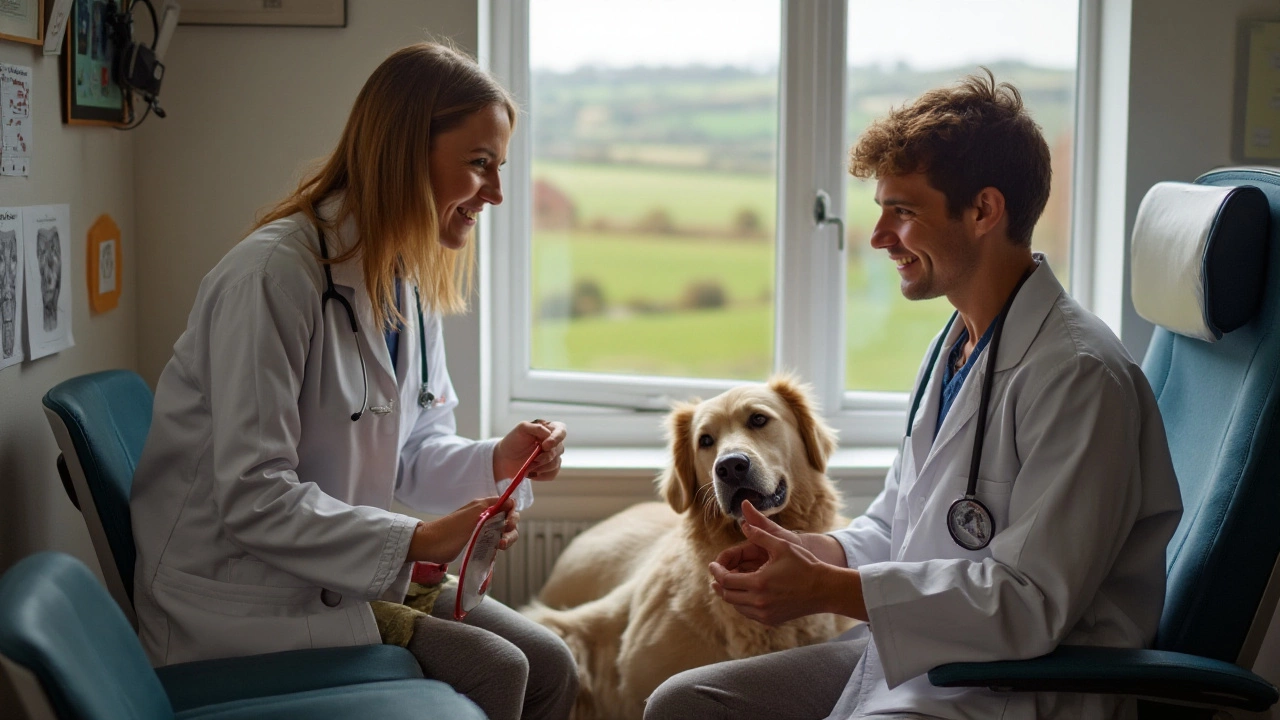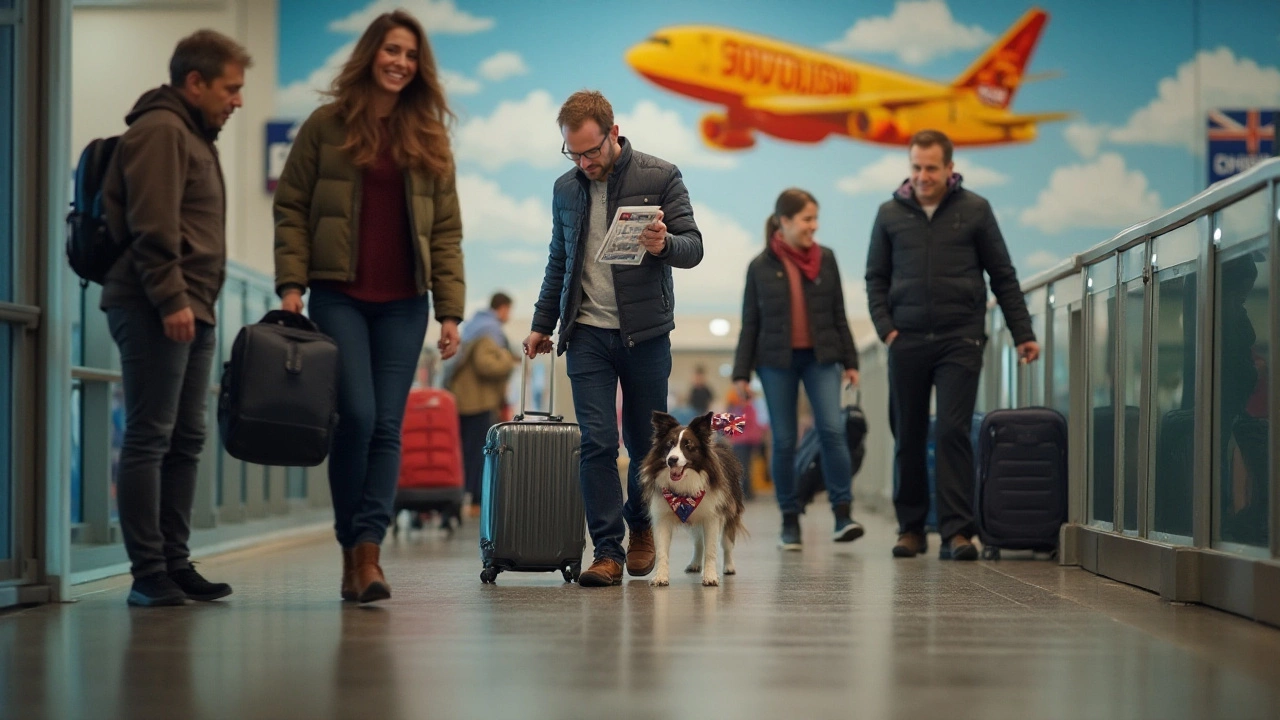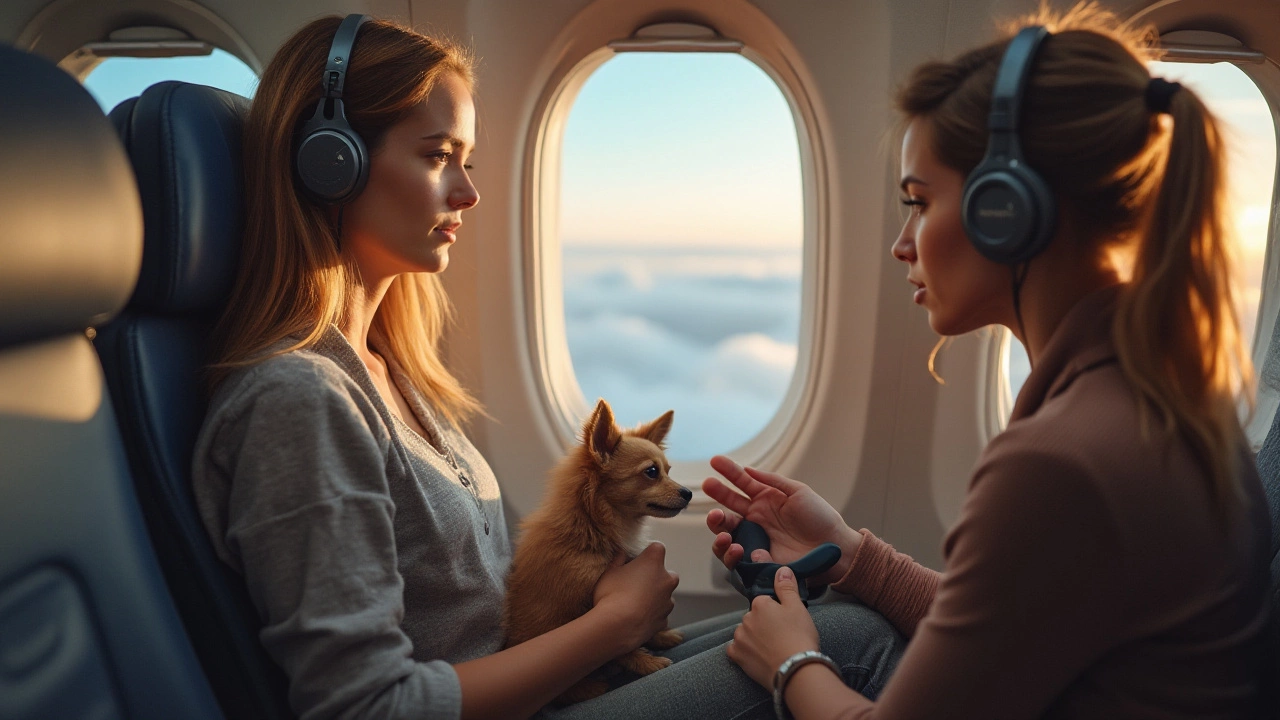Flying with your dog can be an exciting adventure, but it does come with its own set of challenges. One of the most common concerns for pet owners is whether their furry companion's ears hurt when they fly. Like humans, dogs are susceptible to ear discomfort caused by air pressure changes during flights.
In this article, we'll dive into the reasons why dogs may experience ear pain while flying, how to identify discomfort in your pet, and offer some practical tips to help alleviate this issue. Armed with this knowledge, you'll be better prepared to ensure a smooth and pleasant experience for both you and your four-legged friend.
- Understanding Dog Ear Pain During Flights
- Symptoms of Ear Discomfort in Dogs
- Tips for Reducing Ear Pain while Flying
- Preparing Your Dog for Air Travel
Understanding Dog Ear Pain During Flights
Traveling by air is an amazing way to cover long distances quickly, but for dogs, this convenient mode of transport can come with some pretty uncomfortable sensations. Similar to humans, dogs can experience ear discomfort due to the change in cabin pressure that occurs during a flight. This is particularly pronounced during takeoff and landing when rapid altitude changes are most prevalent. The key culprit behind this discomfort is the Eustachian tube, a small passage connecting the middle ear with the back of the nose. This tube helps to regulate air pressure in the middle ear, balancing it with the air pressure outside. Rapid changes during flights might be too fast for this natural adjustment, causing pressure to build up and leading to pain or discomfort, especially for canine travelers.
Dogs are not equipped to 'pop' their ears like humans do, meaning they rely on other mechanisms to aid in pressure equalization. Chewing or yawning can help, which is why offering chew toys or treats during takeoff and landing can be beneficial. Observation is key here. Many dogs may display signs of ear discomfort by scratching at their ears, shaking their heads vigorously, or whining. Some might even go as far as pacing or refusing to settle in their allocated space. Ensuring you're aware of these behaviors and making a proactive effort to soothe your dog's discomfort can help manage any potential issues before they escalate into more significant problems.
"Much like humans, pets experience pressure changes in the cabin during flights. Attention to your pet's needs and consulting with a vet beforehand can make a world of difference," says Dr. Katherine Kelsey, a veterinarian specializing in animal behavior.
There hasn't been an abundance of specific studies concerning ear pain in dogs during flights, but the principles that apply to human experiences with air travel do correlate closely. According to aviation experts, cabin pressure is typically maintained to an altitude of about 5,000 to 8,000 feet. This pressure is sufficient for most humans to be comfortable, but animals have different sensitivities. Dogs can have varied responses based on breed and individual health, emphasizing the need for awareness while flying with your furry companion. In severe cases, the uneven pressure can even lead to ear infections or other medical problems that would require attention from a veterinarian post-flight.
Understanding these underlying physiological challenges can help explain why some dogs may be more sensitive to flight. Making an informed decision alongside your vet about the suitability of air travel for your dog and selecting preventative measures can offer the best flying experience for both of you. Remember, each dog is unique, and while some might handle air travel like seasoned pros, others may exhibit more distress, needing a bit more preparation and care. As a dedicated pet owner, being informed and prepared is the first step toward ensuring a safe journey.

Symptoms of Ear Discomfort in Dogs
Understanding the signs of ear discomfort in dogs when flying is crucial for anyone who wants to ensure a pleasant journey for their furry companions. One of the first things to observe is their body language. Dogs cannot communicate pain verbally, so, as a pet owner, you need to be attentive to their non-verbal cues. You might notice your dog shaking their head vigorously more often than usual. This is often a sign that something is bothering their ears, similar to how we pop our ears during an altitude change.
Crying or whimpering is another sign of ear discomfort. Pay attention to any unusual vocalizations, especially if your dog is typically quiet or not prone to making noise. During a flight, moving from one altitude to another can result in pressure changes, which may make your pet uneasy and lead them to express their discomfort vocally. Dogs may also scratch or paw at their ears frequently. This repetitive behavior could indicate they are trying to relieve themselves from the sensation of blocked or painful ears.
Furthermore, if your dog suddenly becomes lethargic or unwilling to move around when they usually enjoy playing and exploring, it might be due to discomfort caused by changes in air pressure. Another subtle but telling sign is incessant yawning. While yawning can indicate tiredness, during flights, a series of yawns might suggest an attempt to equalize ear pressure. An important thing to observe is balancing problems. If your dog seems disoriented or stumbles more than usual, this could be a clue to ear pain, as ears play a vital role in maintaining balance.
According to Dr. Jane McDowell, a noted veterinarian, "Though we can't directly ask them, by noticing changes in behavior and routine habits, we can get a good sense of what's troubling our pets. Dogs are creatures of habit and any deviation from their usual pattern is a potential red flag."
Another indicator is a refusal to eat or drink during the flight. This reaction is often because swallowing and chewing can help alleviate pressure buildup in the ears, and if a dog is continuously refusing these activities, it might mean they are too uncomfortable to even try. Keeping an eye on such behaviors and understanding the signs can make a significant difference in your dog's travel experience. With the right observation skills, potential ear pain or discomfort can be caught early, aiding in timely relief and ensuring a smooth flight.

Tips for Reducing Ear Pain while Flying
Traveling with your beloved pup might feel daunting when considering their comfort, especially when it comes to potential ear pain caused by air pressure changes. Fortunately, there are several strategies you can employ to help your dog adjust more comfortably to air travel conditions. Understanding the intricacies of canine ear physiology can also equip you better in managing their comfort.
Before you embark on your journey, consider a visit to your veterinarian. A quick check-up can assure you that your dog’s ear health is in good condition, and your vet might also share additional advice tailored to your furry companion’s needs. Keeping your dog hydrated before and during the flight is crucial. Hydration maintains the moisture in your dog's ear canals and throats, potentially reducing discomfort caused by dry cabin air. Offering ice cubes or frequent water breaks can be a simple yet effective approach.
Another strategy is to engage your dog in chewing activities. Encouraging them to chew on dog-friendly toys can help equalize the pressure between the inner and outer ear. You could pack a variety of chew toys to keep things interesting. Interestingly, Dr. Sarah Stewart, a notable veterinarian, suggests that "Chewing not only aids in pressure regulation but also helps in soothing nerves. It's not just about the ears, but keeping the whole dog calm during the flight."
Timing your dog’s meals around takeoff and landing may also make a difference. Feeding your dog a light meal or snack can naturally encourage jaw movement, helping their ears adjust more smoothly to pressure changes. However, make sure you avoid overfeeding since high altitudes might sometimes upset their stomachs. Some pet owners also find it helpful to practice this routine on car rides to familiarize their dogs with the ritual.
Lastly, invest in a quality carrier that offers sound insulation. This creates a calming space for your pet, controlling the noise level and minimizing stressors that might compound with ear discomfort. For long flights, consider pet-safe ear muffs or wraps designed to manage pressure and noise. A useful precaution is to ensure that the carrier fits the airline’s standards while providing ample comfort for your dog.
In summary, while flying can initially pose challenges to canine comfort, by taking proactive steps, you can alleviate any potential ear discomfort. Remember, preparation is key. A bit of foresight and care can make the skies friendlier for our four-legged family members.

Preparing Your Dog for Air Travel
Getting ready to fly with your dog involves much more than just booking a ticket and packing your bags. The process requires thoughtful preparation to ensure your pet's comfort and safety. When considering how to mitigate any potential ear discomfort, it's essential to begin planning well in advance of your departure date. One of the first steps involves a visit to the veterinarian. A pre-flight check-up can confirm that your dog is fit for travel and allows you to address any existing health issues, particularly those related to the ears. This is crucial because hidden ear infections or irritations can worsen during a flight due to pressure changes. Your vet can also provide advice tailored to your pet's specific airline requirements and overall travel readiness.
Once the vet gives the green light, the next focus should be on introducing your dog to the travel crate. Airlines usually require a crate that meets specific standards for air travel, and it's vital that your dog feels comfortable in it. Gradual introduction to the crate should start a few weeks ahead of time. Begin by placing the crate in a familiar environment and encouraging your dog to explore it. Positive reinforcement, such as treats and calming toys, can help your dog associate the crate with a safe space. Over time, increase the duration your dog spends in the crate. This process reduces stress during the actual journey and can also assist in minimizing any ear pain, as a calm dog is less likely to be disturbed by pressure changes.
Training your dog to handle the sounds and sensations of travel is another crucial step. If possible, expose your pet to similar noises they might experience at the airport, like loudspeakers or moving vehicles. Creating an airport-like environment can be done right in your home, and even taking short drives can simulate the movement of the plane. It's often helpful to play recordings of tools like hair dryers or vacuum cleaners since they mimic the constant hum of a cabin. These sessions can considerably reduce anxiety, which is known to exaggerate any discomfort your dog may experience, including ear pain. An effective training program not only boosts your pet's confidence but also improves their adaptability to new situations and environments.
According to Dr. Evelyn Yang, of the Animal Travel Agency, "Acclimating your canine to various sounds and environments before the trip can lead to a smoother, less stressful flying experience for both the dog and the owner."Additionally, think about diet and hydration leading up to travel. Ensure your dog has access to plenty of water but limit their food intake shortly before the flight. An appropriately hydrated pet is less prone to ear pressure issues. Carry along their usual diet, reducing the risk of digestive problems amid the stress of travel. A well-fed dog is more likely to rest quietly, further minimizing the chances of ear discomfort disrupting their journey.
Lastly, consider travel-friendly accessories and medications. Dog travel kits often include items designed to alleviate in-flight stress and potential discomfort. These might include products such as ear plugs specifically designed for dogs, calming sprays, and chew toys. For dogs prone to anxiety, your vet can recommend sedatives or anti-anxiety medications. It's crucial to conduct a trial before the flight to observe how your dog responds to any new supplement or medication. In combination, these strategies not only prepare your pet physically but also contribute to an emotionally reassuring experience, making air travel a positive encounter instead of an ordeal.

